Me and you. 😘
25.08.2025 12:35 — 👍 0 🔁 0 💬 0 📌 0Cosmic Horror, Donuthulhu
@donuthulhu.bsky.social
18+ only. 🔞 🌶️ 🔗 Part Succubus, Part Goblin, Part Siren, and Part Eldritch Whorror. All Femme, All Fatale. She/Her ♀️ PanDemisexual 🏳️⚧️
@donuthulhu.bsky.social
18+ only. 🔞 🌶️ 🔗 Part Succubus, Part Goblin, Part Siren, and Part Eldritch Whorror. All Femme, All Fatale. She/Her ♀️ PanDemisexual 🏳️⚧️
Me and you. 😘
25.08.2025 12:35 — 👍 0 🔁 0 💬 0 📌 0 12.06.2025 21:10 — 👍 52 🔁 10 💬 0 📌 1
12.06.2025 21:10 — 👍 52 🔁 10 💬 0 📌 1
How I show up in people's lives.
21.08.2025 22:19 — 👍 1 🔁 0 💬 0 📌 0

Is this what I'm supposed to do here? 🤭
Thighs and panties? 🤭🤭
💀💀💀 I'm working on it.
20.08.2025 02:17 — 👍 0 🔁 0 💬 0 📌 0💀💀💀
18.08.2025 21:23 — 👍 0 🔁 0 💬 1 📌 0
The bright blue spiral galaxy NGC 6951, 78 million light-years away in Cepheus, has a starry history and a supermassive black hole at its core. It has hosted six supernovae in 25 years. Hubble captured this stunning image in visible and infrared light. Credit: NASA, ESA, Hubble, A. Filippenko et al.
The bright blue spiral galaxy NGC 6951, 78 million light-years away in Cepheus, has a starry history and a supermassive black hole at its core. It has hosted six supernovae in 25 years. Hubble captured this stunning image in visible and infrared light.
Credit: NASA,ESA,Hubble, A. Filippenko et al
There's so much beauty out there, above us.
10.03.2025 08:29 — 👍 4 🔁 0 💬 0 📌 0
A spiral galaxy, possibly merging from the Galaxy Zoo: Hubble project, classified by 46 volunteers.
A spiral galaxy, possibly merging, observed with the Hubble Space Telescope in the COSMOS survey.
It is at redshift 0.93 (lookback time 7.66 billion years) with coordinates (150.75430, 2.05084).
46 volunteers classified this galaxy in Galaxy Zoo: Hubble.

A pink glowing nebula is centered on a black background dotted with stars. The nebula is round-ish in shape and has a dark dust lane threaded from the bottom to the center. The nebula appears to be illuminated from above by the glow of a bright blue star. A few other less prominent blue stars dot the frame.
NGC 1579, the Northern Trifid Nebula. I caught this target last fall, but didn’t have a processed version that I was happy to share until now.
4 hrs, #Seestar S50 🔭 🧪
Siril 1.3.6-dev, GraXpert, Starnet, GIMP

Dusty Orion Nebula in Infrared
10.03.2025 06:32 — 👍 82 🔁 9 💬 1 📌 0
A spiral galaxy seen face-on. Broken spiral arms made of blue patches of stars and thin strands of dark dust swirl around the galaxy’s centre, forming a broad, circular disc. An extended circular halo surrounds the disc. The centre is a brightly-glowing, stubby bar-shaped area in a pale yellow colour. A bright star in our own galaxy, with long cross-shaped diffraction spikes, is visible atop the distant galaxy.
This star & spiral galaxy may appear to be neighbours, but they're actually separated by 45 million light-years.
The image of the pair combines data from two instruments on the NASA/ESA #Hubble Space Telescope, taken more than 20 years apart.
Read more 👉 esahubble.org/images/potw2...
🔭

The Rosette Nebula, a region of recent star formation, resembles a flower opening, with the glowing gas configured like the petals, and the newly formed stars at the bud.
The magnificent Rosette #nebula, a region of recent star formation, with a cluster of adolescent stars at center. It's about 5000 LY away and about 130 LY across. (Photo by Rob Gendler)
#astronomy #astroedu #space #spacephotography #astronomyimages #science #sciencephotos #stars #astrophotography

I have recently turned my attention to some archival GALEX data and found it quite promising. What surprised me the most was the presence of galactic cirrus in the FUV (far ultraviolet) channel. Because I am unfamiliar with the "personality" of the telescope I almost mistook it for some kind of odd artifacting. As far as I know, this cirrus has never been presented in a GALEX image before, so I am happy to have found it there. If you are having a hard time seeing it, a brighter version is available here (6.7MB JPG). Processing notes: Of greatest concern is the FUV-bright star (Nu Andromedae) in the lower left. There was no FUV data available; all came from a single, low duration NUV (near ultraviolet) exposure. The brightness of the star was interpolated based on nearby contextual clues from frames which did contain FUV information. It is definitely the brightest FUV source in the frame, and I think it was fair to "fake" it like this. From what I am able to gather, observations of bright FUV sources were avoided due to long-term issues with the detectors, so that is probably why there were never any exposures of this particular star. Several areas are monochrome like this, mostly in the lower left corner and another near the southern tip of the galaxy. These filler data are very coarse and do not look good up close, but they had to suffice. Many little annuli were removed, including a giant line of them emanating from Nu Andromedae. I tried to match ...
GALEX Andromeda Mosaic - From Judy Schmidt (geckzilla.bsky.social) - https://flic.kr/p/FPGi9u
09.03.2025 23:00 — 👍 809 🔁 68 💬 26 📌 4
Goodnight everyone
10.03.2025 01:33 — 👍 1818 🔁 141 💬 48 📌 4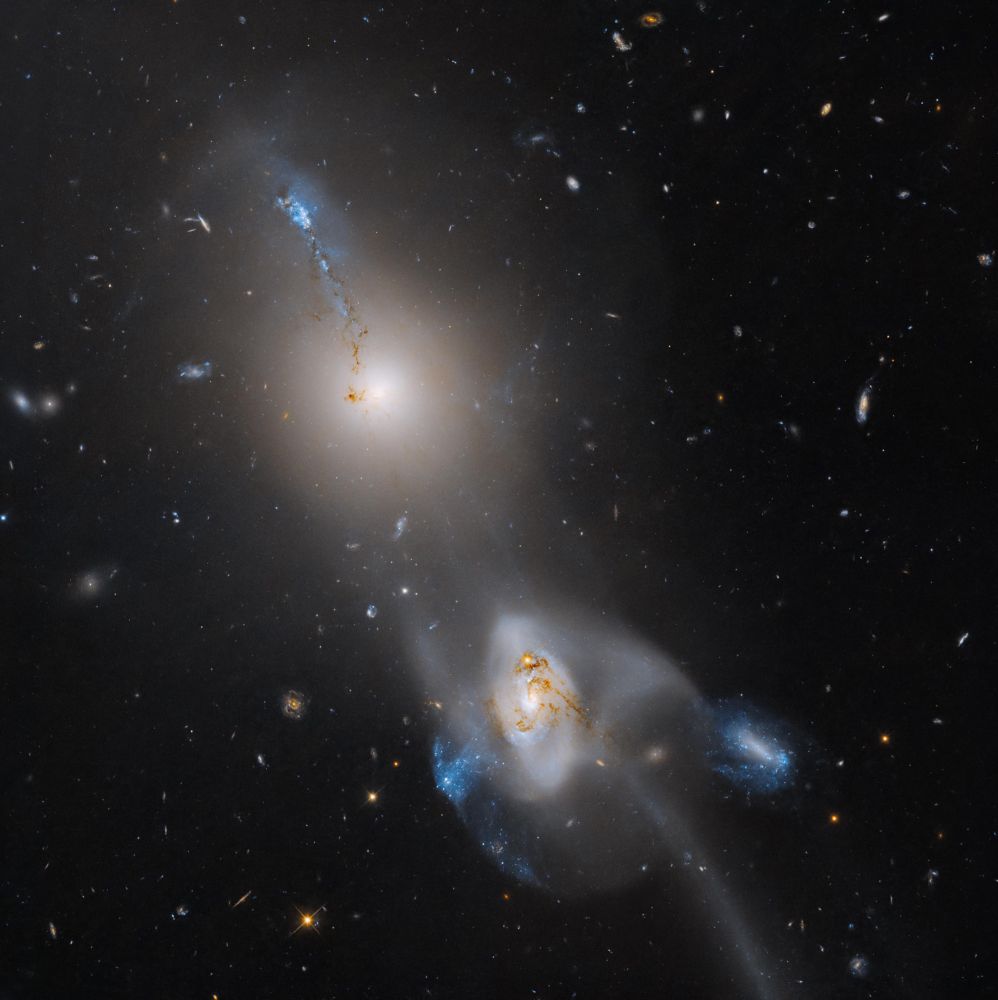
An elliptical galaxy (upper left) and a spiral galaxy (lower right) are connected by a stream of drawn-out gas. Two significant bright blue blobs of star formation are visible on the outskirts of the spiral galaxy, and another extends away from the center of the elliptical. A long tail is visible extending from the spiral galaxy.
NEW HUBBLE IMAGE SHOWING TWO GALAXIES INTERACTING 🤩
09.03.2025 19:11 — 👍 3580 🔁 359 💬 107 📌 28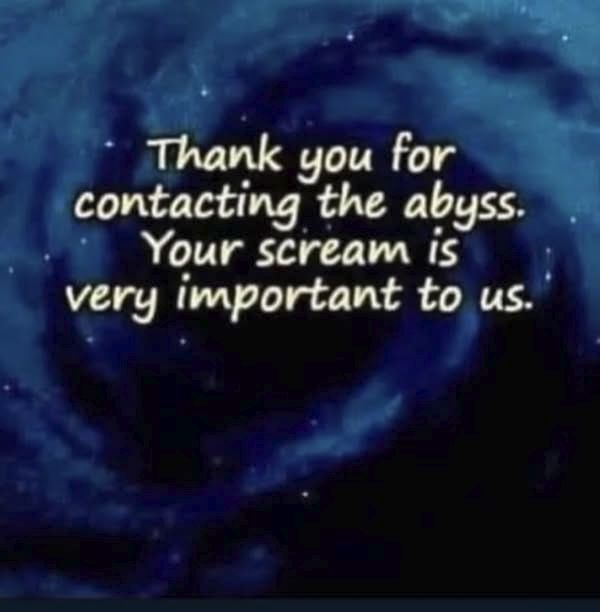 10.03.2025 02:41 — 👍 7121 🔁 1017 💬 84 📌 51
10.03.2025 02:41 — 👍 7121 🔁 1017 💬 84 📌 51
I still don't know what I'm doing here, but I'm trying to learn the platform. Bring you guys my pretty personality from more than just Facebook!
08.03.2025 10:47 — 👍 0 🔁 0 💬 0 📌 0
A merger from the Galaxy Zoo: Hubble project, classified by 143 volunteers.
A merger, observed with the Hubble Space Telescope in the GEMS survey.
It is at redshift 0.44 (lookback time 4.75 billion years) with coordinates (52.87884, -27.98222).
143 volunteers classified this galaxy in Galaxy Zoo: Hubble.
And I have the strength to do it. 😂😂
02.03.2025 12:32 — 👍 1 🔁 0 💬 0 📌 0So I got followed by an account on here with Musk's name. Makes you wonder if it's a satire account or what, but if he hits on me, I know what I have to do. 😂😂
02.03.2025 12:32 — 👍 1 🔁 0 💬 1 📌 01 year on HRT as of today! 🥳🎉🎈
01.03.2025 11:59 — 👍 1 🔁 0 💬 0 📌 0
A spiral galaxy called NGC 2283 is seen close up and almost face on. It is filled with puffy, patchy clouds of hot gas and dust. Red, orange and yellow colours indicate light emitted by different particles. The brightest colours are in the centre and along the two spiral arms, which wind out from the centre. Star clusters hide in the gas along the arms. A few large, bright white stars are prominent in the foreground, near to us.
The latest image of the month from #Webb reveals the spiral galaxy NGC 2283.
It took Webb just 10 minutes to collect the data for this image, which reveals clouds of hydrogen gas heated by young stars in this active star-forming galaxy.
Read more 👉 www.esa.int/ESA_Multimed...
🧪🔭
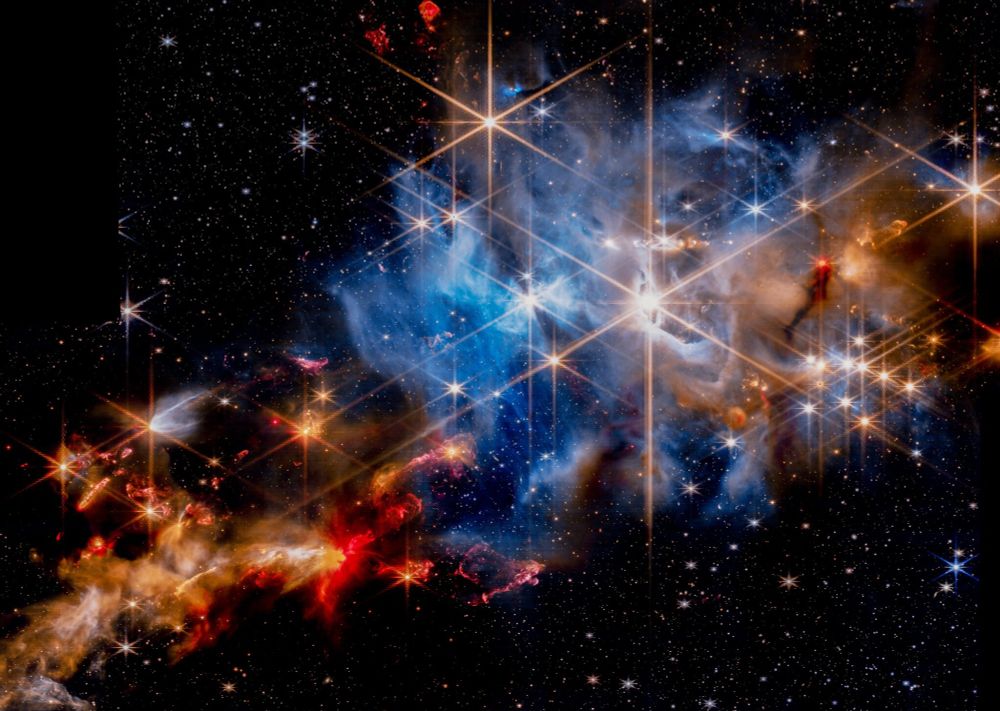
A stunning infrared image from the James Webb Space Telescope's NIRCam instrument captures the Serpens Nebula, a region of active star formation. 1 The image is dominated by a bright blue central region, where intense radiation from young stars illuminates the surrounding gas and dust. This blue core is enveloped by wisps and tendrils of orange and red nebulosity, creating a visually dynamic and colorful scene. Numerous bright stars are scattered throughout the image, each exhibiting the characteristic eight-pointed starburst pattern caused by the telescope's optics. The intricate textures and contrasting colors reveal the complex processes of star birth within this nebula
Serpens nebula (NIRCam image).
Processed by @thocarp.bsky.social
www.flickr.com/photos/19746...

This MIRI's image shows a close-up view of the spiral galaxy NGC 2566. Its core is a round and intensely bright spot, circled by eight long spikes that are artefacts of the JWST's structure. Its disc is an oval shape with edges made of very thick and cloudy arms of gas and dust, predominantly blue but paler and brighter around patches of stars.
For those who missed it, here is a splendid image of the spiral galaxy NGC 2566, captured by #JWST using the Mid-Infrared Instrument (MIRI).
Reference➡️ esawebb.org/images/potm2...
Credit: ESA/Webb, NASA & CSA, A. Leroy
MIRI allows scientists to observe details invisible
🔭 🧪 #extragalactic 🧵
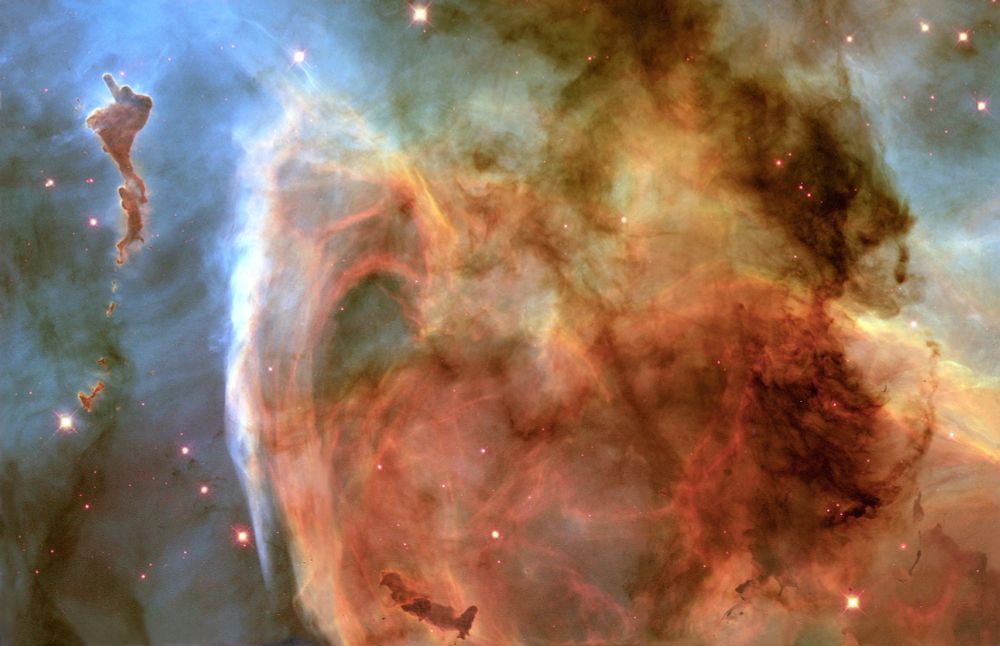
Previously unseen details of a mysterious, complex structure within the Carina Nebula (NGC 3372) are revealed by this image of the 'Keyhole Nebula, ' obtained with the Hubble Space Telescope. The picture is a montage assembled from four different April 1999 telescope pointings with Hubble's Wide Field Planetary Camera 2, which used six different colour filters. The picture is dominated by a large, approximately circular feature, which is part of the Keyhole Nebula, named in the 19th century by Sir John Herschel. This region, about 8000 light-years from Earth, is located adjacent to the famous explosive variable star Eta Carinae, which lies just outside the field of view toward the upper right. The Carina Nebula also contains several other stars that are among the hottest and most massive known, each about 10 times as hot, and 100 times as massive, as our Sun.
Light and shadow in the Carina Nebula.
NASA/ESA, The Hubble Heritage Team (AURA/STScI).
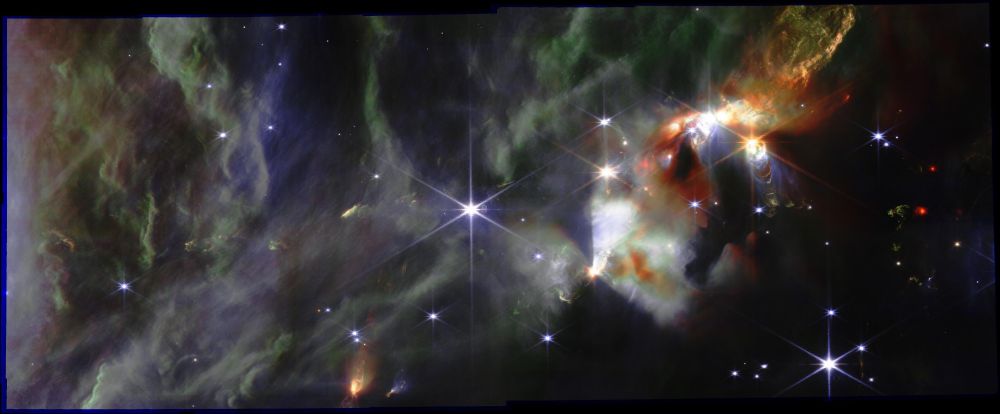
This NIRCam image reveals the OMC2-SE region, showcasing a vast expanse of interstellar gas and dust. The left side is dominated by wispy, cloud-like structures in shades of green and gray, suggesting the presence of cooler gas and dust. Scattered throughout are numerous bright stars, some with visible diffraction spikes. On the right, a denser region exhibits a mix of red and white nebulosity, indicating areas of active star formation and ionized gas. A particularly bright star shines at the center of this region, illuminating the surrounding clouds. The overall image has a dark background, highlighting the luminous details of the nebula.
Another part of OMC2 by JWST.
This one is OMC2-SE.
Processed by @yuvharpaz.bsky.social
nerdculture.de/@yuvharpaz/1...